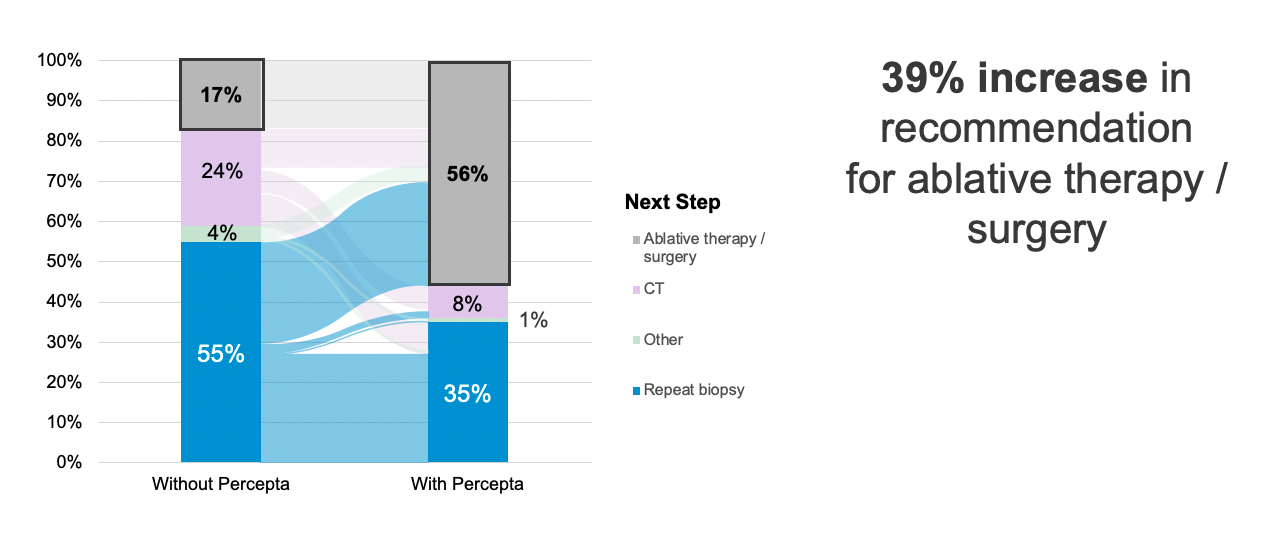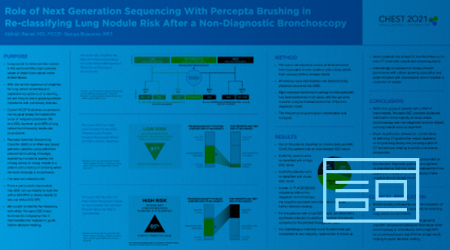EXPLORE EVIDENCE
Clinical utility
study results
Percepta bronchial classifier down classification of risk can decrease additional invasive procedures.
Percepta bronchial classifier can down classify a nodule’s risk of malignancy and decrease additional invasive procedures by 61% at 12 months.1
Percepta GSC expanded clinical utility in patients with early-stage lung cancer.
The Percepta GSC test can accelerate the delivery of curative therapy in patients with a high pre-test risk result that have been up classified to a high risk with a 91% positive predictive value.2

Real world evidence with Percepta GSC
Raval et al. reviews data from his institution that demonstrates how Percepta GSC has helped manage patients. The Percepta GSC test can provide additional information when bronchoscopy is inconclusive with a high NPV for a low result and a high PPV for a high result to guide clinical decision making.
Hear from peers
Discover what key opinion leaders are saying about Percepta GSC in case studies, testimonials or on-demand presentations.
References
1. Lee H, et al. CHEST, 2020.
2. Sethi S, et al. BMC Pulm Med. 22, 26, 2022.

